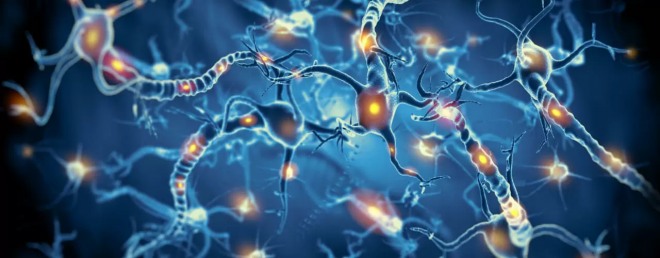Schmahmann’s syndrome is another term for Cerebellar Cognitive Affective Syndrome. CCAS (Cerebellar Cognitive Affective Syndrome) causes executive, visual-spatial, and language difficulties, as well as emotional blunting, sadness, disinhibition, and psychotic characteristics. People who have CCAS often have significant problems with their ability to regulate their emotions, particularly when the lesions primarily impact the vermis.
There are a lot of diseases that affect the cerebellum and cause ataxia, which is characterized by uncoordinated balance, gait, extremity, eye, and speech movements. Ataxic motor disorders may not necessarily accompany cerebellar abnormalities, though.
There are numerous similarities between CCAS (Cerebellar Cognitive Syndrome) and another condition known as CMS (cerebellar mutism syndrome), which is characterized by significantly impaired or absent speech along with neurological, behavioral, and cognitive dysfunction. Cerebellar Mutism Syndrome is described more frequently in the young population following surgical removal of posterior fossa tumors due to the prevalence of the cause in this age group. CMS and CCAS possess similar symptoms, however, CCAS is better defined in adults.
Cerebellar Cognitive Affective Syndrome Symptoms
Cerebellar disorders usually cause ataxia, which is a lack of coordination in movement, unstable walking, trouble speaking, and trouble moving the eyes and swallowing. Recently, it is observed that many patients with cerebellar disease also experience shifts in cognition and emotional state. Cerebellar disease affects mental function more than physical ability.
The Cerebellar Cognitive Affective Syndrome, also known as CCAS, can be recognized by the following symptoms:
- Verbal Processing
- Spatial Cognition
- Emotional Control
- Behavioral Changes
- Executive Function Deficits
- Personality Changes
- Language Deficits
Adults and children with CCAS often experience somewhat severe symptoms following an initial injury, although these symptoms gradually reduce over time. This validates the notion that the cerebellum regulates cognitive processes.
The symptom group of Schmahmann’s condition is associated with a reduction in general intellectual capacity. It is found that individuals who have extensive, bilateral, or pancerebellar problems, especially those who have abrupt onset of cerebellar disease, have more severe and broad cognitive and emotional impairments.
Injuries sustained by the posterior lobe contribute significantly to the progression of this newly discovered disease. Patients who have affective disruption frequently have damaged vermiform areas. For cognitive and behavioral problems, the front lobe is found to be less relevant. Schmahmann’s condition improves with time, although executive function remains abnormal.
Cerebellar Cognitive Affective Syndrome Prognosis
The symptoms of this syndrome get better over time without any medication. The patients are re-evaluated one to nine months following their initial neuropsychological examination in the CCAS original report. CCAS requires a significant amount of research. More longitudinal studies are required for future studies to assess the long-term consequences of CCAS. One approach to accomplish this is to investigate cerebellar bleeding during infancy. This would make it possible to study CCAS over an extended length of time to determine how CCAS influences the maturation process.
Since the percentage of children who survive after being diagnosed with a cerebellar tumor is rising, additional research on children who have CCAS attracts researchers. Future research on CCAS is expected to shed fresh light on the disease and lead to better treatment options.
Cerebellar Cognitive Affective Syndrome Test
Standardized neuropsychological test battery and questionnaires, such as the Wechsler Intelligence and Memory Scale, are common tools for neurobehavioral assessment today. These tools are generally used to explore the integrity of cognitive and emotional functioning at the supratentorial level.
As a consequence of these neurobehavioral assessment tools, a variety of mild cognitive and emotional deficits brought on by disturbance of the cerebello-cerebral network’s modulatory role in cognition and affect may go unrecognized utilizing these crude assessment methods. Schmahmann’s syndrome does not have a single, validated, and easy-to-administer clinical instrument that can consistently measure cerebellar-induced cognitive and emotional dysfunctions. There is a need for more research.
Cerebellar Cognitive Affective Syndrome Treatment
Treatments for Cerebellar Cognitive Affective Syndrome now focus on making the symptoms better. Making the patient aware of their cognitive issues is a component of the cognitive-behavioral therapy (CBT) technique, one form of treatment. For instance, a lot of CCAS sufferers have trouble multitasking. The patient would need to be conscious of this issue and concentrate solely on one job at a time using CBT. Some motor problems can also be alleviated with this method.
It is also suggested that transcranial magnetic stimulation, more commonly known as TMS, can also be used to treat psychiatric diseases that affect the cerebellum. Exercises that are meant to improve the motor symptoms of CCAS are another potential therapeutic option. It is demonstrated that these physical workouts can also aid with cognitive problems.
 Health & Care Information
Health & Care Information 


